(MENAFN- Brazil-Arab News Agency (ANBA))
São Paulo – Kuwait's desert environment is portrayed in the exterior design of its pavilion at expo 2020 Dubai with gold prisms representing sand dunes, and projected images of deserts, camels and the colors of the national flag.
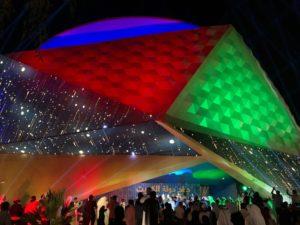
Night view of the pavilion
Upon entering, the first thing visitors see is a huge water tower.“Water towers are present throughout the country, and this is a symbol of how water is key for survival and how we must maintain the sustainability of our water resources, particularly for future generations. Water is the main symbol of sustainability,” Mazen Alansari, vice director of the Kuwait pavilion, told ANBA while accompanying the visit.
The country's water towers store large quantities of fresh water in elevated tanks – a Kuwaiti symbol of sustainability and water security. The tower is strategically located at the center of the pavilion and extends upwards through all levels of the pavilion.
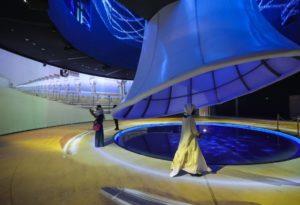
The water tower is located at the center of the pavilion
To get to the first level, there's a ramp displaying a video on the history of Kuwait.“We have this film telling the history of Kuwait, trade and pearl hunting. Our history also includes the Greeks, who lived in our part of the world during the Greek era. We have artifacts proving it, and some replicas are exhibited here,” Alansari said.
From the ancient history to the present time, the video brings images of water towers that are a landmark of the Kuwait City, the street market, and other landscapes.“In the end of the video, there's a symbolic image of hand-in-hand people passing through the Sheikh Jaber Al-Ahmad Al-Sabah Causeway, which represents the future vision of the country. All this is seen through the eyes of a seven-year-old girl who represents the society of the future,” he said.

The pavilion's vice director Mazen Alansari
The fourth longest bridge in the world started being built in 2013 and is about to open. The 48.5-km bridge connects Kuwait City to Madinat Al-Hareer, the Silk City, a municipality that is under construction and is expected to be ready in 2023. The causeway cut through the sea; a drive that would take around one hour by land will take around 20 minutes over the sea.
Designed by Italian architect Marco Pestalozza, the pavilion is located at the Sustainability district of the Expo, close to Brazil's and Qatar's pavilions. With a built-up area of 5,600 square meter, Kuwait pavilion at Expo 2020 marks the country's largest participation in a world exhibition.
Incorporating the theme 'New Kuwait, New Opportunities for Sustainability,' the focus on sustainability is at the heart of the building. Alansari said the building was designed in a modular manner, ensuring that it can be easily dismantled and that the construction materials will be recycled or reused when the exhibition concludes next April.

Going through the tower on the first floor of the pavilion
On the first floor, the pavilion features interactive totems with information on the pillars of the Vision 2035 by late emir Sabah Al Hamad Al Jaber Al Sabah. They include infrastructure, healthcare, education, economy diversification, and renewable energy sources. Kuwait National Development Plan (KNPD) is underway and intends to transform the country into a leading financial, commercial and cultural hub in the region in 14 years. The pavilion's vice director said one of the main goals in the Expo is showcasing Kuwait's New Vision 2035 development initiatives.
A timeline on the walls show the history of pearl trade and fishery, the oil discovery in the country in 1913, the first oil export in 1946, to this day.
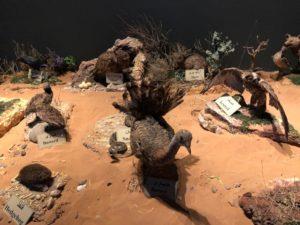
Kuwaiti desert fauna
On an interactive table, there is information on the opportunities for trade and investment in the country, telling a little about the work of government agencies like the Chamber of Commerce and Industry of Kuwait and Kuwait Direct Investment Promotion Authority (KDIPA). Alansari stressed that the country is an economically ideal country for foreign investments, said that Brazilians are welcome and that the language barrier is not a problem as the Kuwait speak English.
Visitors can see up close Kuwait fauna in a room with stuffed animals. The pavilion also appreciates women's empowerment, their relief work and culture, with listening experiences.
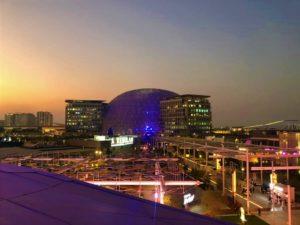
View from the rooftop
On tourism, Alansari said the country issues entry visas for 35 countries. He said the first step is attracting domestic and regional tourism, so that in a second moment they can focus on countries from other regions in the world. Brazilians must ask for a visa with approximately one month in advance and get a PCR test up to 72 hours before arriving, as well as proof of full COVID-19 vaccination. The vice director pointed out that Kuwait has recently become a democracy and said the country is expected to open up even more.
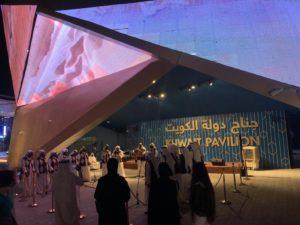
Traditional musical performances
On the top floor, there are a rooftop and an outside area with a great view of the Expo and Al Wasl plaza. Furthermore, there cultural performances every day, with art exhibitions, craftsmanship and live music as a way to encourage artists from the country. At night, traditional musical performances take place in front of the pavilion.
All pavilions of the world exhibition are open from 10 am to 22 pm. Expo 2020 Dubai runs through March 31, 2022.
Translated by Guilherme Miranda
Bruna Garcia/ANBA
Bruna Garcia/ANBA
Giuseppe Cacace/AFP
Bruna Garcia/ANBA
Bruna Garcia/ANBA
Bruna Garcia/ANBA
Bruna Garcia/ANBA
Bruna Garcia/ANBA
The post Water a key feature of Kuwait pavilion at Expo appeared first on Agência de Notícias Brasil-Árabe .
MENAFN26112021000213011057ID1103257347
Legal Disclaimer:
MENAFN provides the information “as is” without warranty of any kind. We do not accept any responsibility or liability for the accuracy, content, images, videos, licenses, completeness, legality, or reliability of the information contained in this article. If you have any complaints or copyright issues related to this article, kindly contact the provider above.